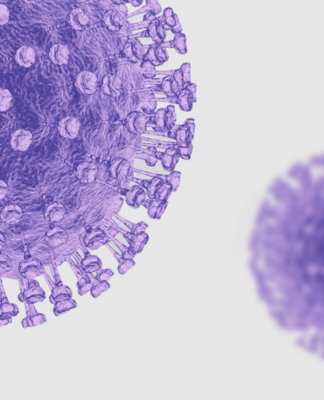CONFLICTSEUROPE
Will Ukraine benefit from the Wagner mutiny?
Frank Hofmann
8 hours ago8 hours ago
For the moment, Wagner mercenaries have stopped fighting alongside Russian forces. Will this help Ukraine push ahead its counteroffensive?
https://p.dw.com/p/4TEnW
Ukrainian servicemen fire a howitzer towards Russian troops
Ukrainian servicemen fire a howitzer towards Russian troopsImage: REUTERS
Wagner Group mercenaries have three options, Russian President Vladimir Putin said after their short-lived weekend mutiny ended earlier this month. According to Putin, they could either resettle in Belarus, return to their families, or integrate into the Russian armed forces. But what exactly will happen to the 20,000-odd Wagner fighters under Yevgeny Prigozhin’s command “is completely unclear,” Ukraine and Russia analyst Nico Lange told DW. Will the Ukrainian army benefit now that Wagner mercenaries are no longer fighting alongside Russian troops?
German analyst Lange, who also works for the Munich Security Conference, points out that Wagner sometimes had more modern infantry fighting vehicles and weaponry at its disposal than the regular Russian army, judging by recent videos of supply transports. Russian Defense Minister Sergei Shoigu and his commanders will likely be keen to get their hands on this modern kit, though integrating Wagner fighters into the Russian armed forces could take time.
Power struggle benefits Ukraine
The “power game” between Putin, Prigozhin and Belarusian dictator Alexander Lukashenko, who negotiated the agreement to end the Wagner rebellion, is not over, says the US Institute for the Study of War. Its researchers conclude this power play “will continue to have short- and long-term consequences that may benefit Ukraine.”
Which opportunities now present themselves to Ukraine’s commander-in-chief Valerii Zaluzhnyi, and his commanders? So far, no details about Kyiv’s plans for its counteroffensive have leaked.
If one pieces together information from readily available sources, such as social media videos, satellite footage for sale, and the few statements issued by the Ukrainian army, one can glean that Kyiv’s forces liberated villages and settlements in three places along the front east of the Ukrainian-held city of Zaporizhzhia, as well as north and south of Bakhmut.
But drone footage of Ukrainian armored personnel carriers getting stuck in Russian minefields, which had been prepared with explosives and anti-tank barricades for months, also keep surfacing.
“What is clear is that they [Ukraine] are still trying to overcome the first hurdle, this combination of minefields and a lack of air superiority, which already seems to be very problematic,” Lange told DW.
Brady Africk, an analyst with the American Enterprise Institute think tank in Washington, recently updated a map he created showing Russian defensive lines based on satellite imagery. Apparently, Russia continues strengthening its fortifications.
Africk’s map also draws attention to the Russian-controlled Kakhovka reservoir dam, which was blown up earlier this month before the Wagner revolt unfolded. Ukraine has blamed Russia for the explosion, whereas Moscow blames Kyiv. The New York Times, meanwhile, carried out extensive research into matter, concluding that only the Russian army had the capability to blow up the structure.
Old roads re-emerge
Kakhovka reservoir has now largely drained. Images posed on Telegram and Twitter show the Kakhovka reservoir riverbed that has become steppe in large parts. On Facebook, Ukrainian treasure hunters are sharing their experiences of searching the ground for valuables with metal detectors.
Kakhovka reservoir pictured on June 20, 2023, after the dam was blown upKakhovka reservoir pictured on June 20, 2023, after the dam was blown up
Kakhovka reservoir pictured on June 20, 2023, after the dam was blown upImage: Dmytro Smolienko/Ukrinform/ABACAPRESS/picture alliance
The German War Graves Commission, meanwhile, issued a press release saying it is investigating reports that remains of German Wehrmacht soldiers have been found in southern Ukraine after the Kakhovka dam broke. The organization secures remains of World War II war dead across Europe, ensuring their reburial in cemeteries.
Old maps fashioned by the Wehrmacht, Nazi Germany’s armed forces, show several roads crossing the Kakhovka reservoir riverbed. They have become visible once more now the water has drained away.
Kakhovka dam prior to its desctructionKakhovka dam prior to its desctruction
Kakhovka dam prior to its desctruction
Former US Air Force meteorologist David Helms, who is part of a globally dispersed group of Ukraine supporters sharing insights mainly on Twitter under the #NAFO hashtag, has looked in these roads. He studied the drained Kakhovka reservoir on satellite images and juxtaposed them with old Wehrmacht maps, identifying seven roads that were still in use during World War II.
Today, the Ukrainian army is located north of the former reservoir and Dnieper River, which now flows in its historic riverbed — while Russian forces are stationed to the south. Strikingly, few Russian army positions can be seen west of the Russian-held town of Vasylivka, judging by US analyst Brady Africk’s map.
This means there is at least a possibility that a gap could be opening up for the Ukrainian army, although much uncertainty remains, especially as Russian forces can always attack from the air. Lange, however, says his impression of the Ukrainian counteroffensive is that “Ukraine is still holding back its big hammer.”
Mykola Berdnyk contributed to this article.
This piece was translated from German.






























